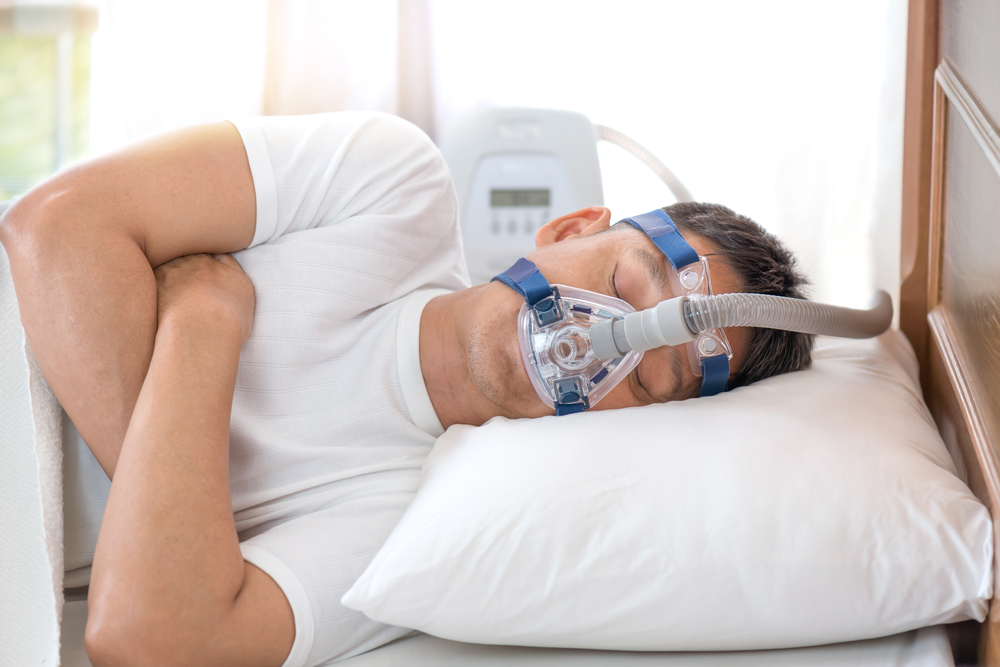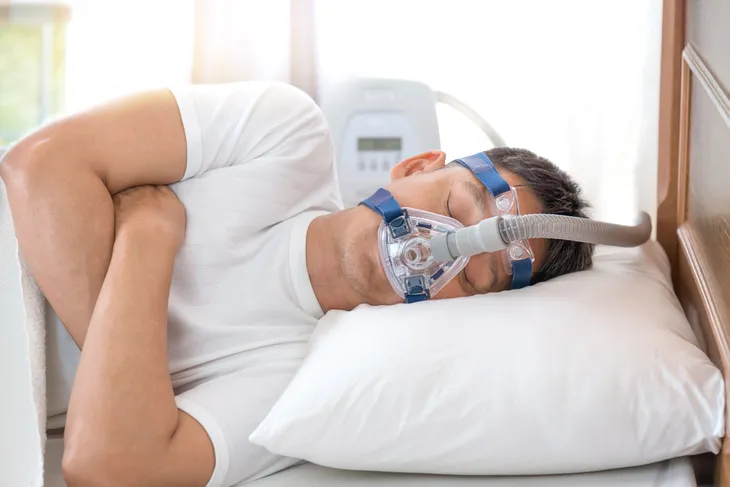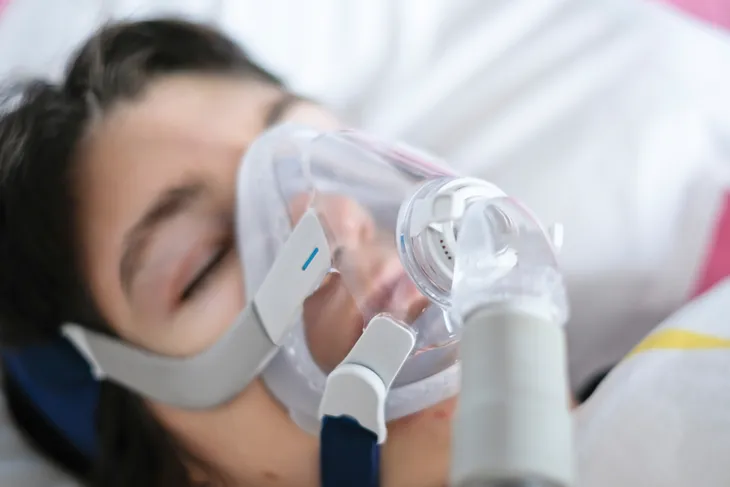You’ve got all the signs of sleep apnea, from loud snoring to feeling unrested during the day despite getting enough hours of sleep. Now your doctor has diagnosed you with this fairly common health issue, and they are recommending treatment in the form of positive airway pressure (PAP) to help you.
There are options, including continuous PAP (CPAP) and bilevel PAP (BiPAP) machines. But what do they do, and what are the key differences between them? Here’s a guide to CPAP and BiPAP to help you choose the right one with help from your healthcare provider based on your needs and preferences.
What Is CPAP?
First off, CPAP functions much like the name suggests. Healthline explains that the machine supplies a “steady flow of oxygen into your nose and mouth as you sleep,” which helps keep your airways open.
While using a CPAP machine, you’ll have an airtight mask over your nose/mouth that receives pressurized air (generated by a compressor) through a tube. While there are several models of CPAP machines, they all share common features such as a headgear frame and adjustable straps to adjust the fit.
Who Uses CPAP?
The American Sleep Association explains that CPAP is used for patients with “severe” breathing issues while they sleep, and it “is the most recommended sleep apnea treatment for patients who suffer from obstructive sleep apnea.”
However, CPAP is not just for adults. The therapy can also be used for infants whose lungs have not fully developed to ensure they get enough air.
What Are the Pros of CPAP?
These machines have been around since 1981, and they have continuously improved since as a proven approach to obstructive sleep apnea (OSA). Healthline lists several benefits of choosing a CPAP machine, namely normalizing your breathing during the night so you don’t wake up (and subsequently feel tired during the day).
Using a CPAP can also lower your risk of a serious health event, such as a heart attack or stroke, and it can lower your blood pressure. There’s a chance a CPAP might also reduce your blood sugar and cholesterol levels.
What Are the Cons of CPAP?
There are some possible side effects from using CPAP that can generally be fixed with the help of a trained professional, explains Very Well Health. It notes some people find the air pressure or the mask is uncomfortable. Another possible downfall is air leakage from the mask, which can impact the effectiveness of the therapy.
Other possible issues from using CPAP, according to the source, include skin rashes or marks, especially if the mask is not fitted properly. There could also be excessive dryness in the nose or mouth but a heated humidifier can help alleviate these symptoms. Finally, the continuous air intake can cause “air swallowing” with bloating and belching as a result.
What Is BiPAP?
BiPAP is another option to help those with sleep apnea-related symptoms. WebMD explains that people with sleep apnea might have trouble drawing enough air into their lungs during rest, and this device injects pressurized air into the lungs to open them up.
The source says the machine is “about the size of a lunchbox” and is attached through a tube to a face/nasal mask or nasal plugs. Like a CPAP machine, a motor (compressor) delivers air through the tube into your body. However, there are different pressures for inhaling and exhaling, which we’ll explain.
Who Uses BiPAP?
BiPAP can help patients with sleep apnea, just like CPAP. However, there are a number of other conditions affecting breathing that it also can treat, such as chronic obstructive pulmonary disorder (COPD), obesity hypoventilation syndrome, pneumonia, or a flare-up of asthma.
The American Sleep Association explains the device is also often prescribed for patients who have congestive heart failure or coronary artery disease, as well as neurologic and neuromuscular disorders.
What Are the Pros of BiPAP?
The Sleep Foundation explains that BiPAP has two air pressure settings that are different for inhaling and exhaling. The exhalation setting, known as EPAP, is “usually significantly lighter” than the inhalation setting, known as IPAP, so patients don’t feel like they’re fighting to breathe out.
It’s standard for BiPAP machines to detect the patient’s breathing patterns and spontaneously switch between pressure levels. There are sometimes other settings, including a “timed switching” to program how long each phase is. A spontaneous/timed switching setting activates the latter mode when the number of breaths has dropped below a set number.
What Are the Cons of BiPAP?
Some possible issues with using BiPAP are similar to CPAP. Johns Hopkins Medicine says most complaints relate to the mask, namely fitting too tightly. There are other possible risks such as skin damage around the mask area, mild stomach bloating, eye irritation, or sinus pain/congestion (that can lead to headaches).
There is also the possibility of air leaking from the mask, which can reduce how effective the therapy is. Similar to CPAP, you might also experience dryness of the mouth or nose, which can be alleviated with help from a humidifier. The source suggests talking to your healthcare provider if you have any issues with BiPAP.
So Which One Do I Choose?
Whether you should choose CPAP or BiPAP or whether you can make a switch from one to the other should be at the recommendation of your healthcare provider. The Sleep Foundation explains that some patients experience an “adjustment period” with CPAP before they’re comfortable, but these issues can be managed by adjusting the settings.
Meanwhile, BiPAP might be more suitable for patients “who do not tolerate CPAP therapy.” Also, keep in mind that BiPAP can treat other types of sleep apnea, such as central sleep apnea and complex sleep apnea, as well as the other aforementioned conditions (such as COPD). The source also notes BiPAP “historically has been more expensive than CPAP,” which could also be a deciding factor.












